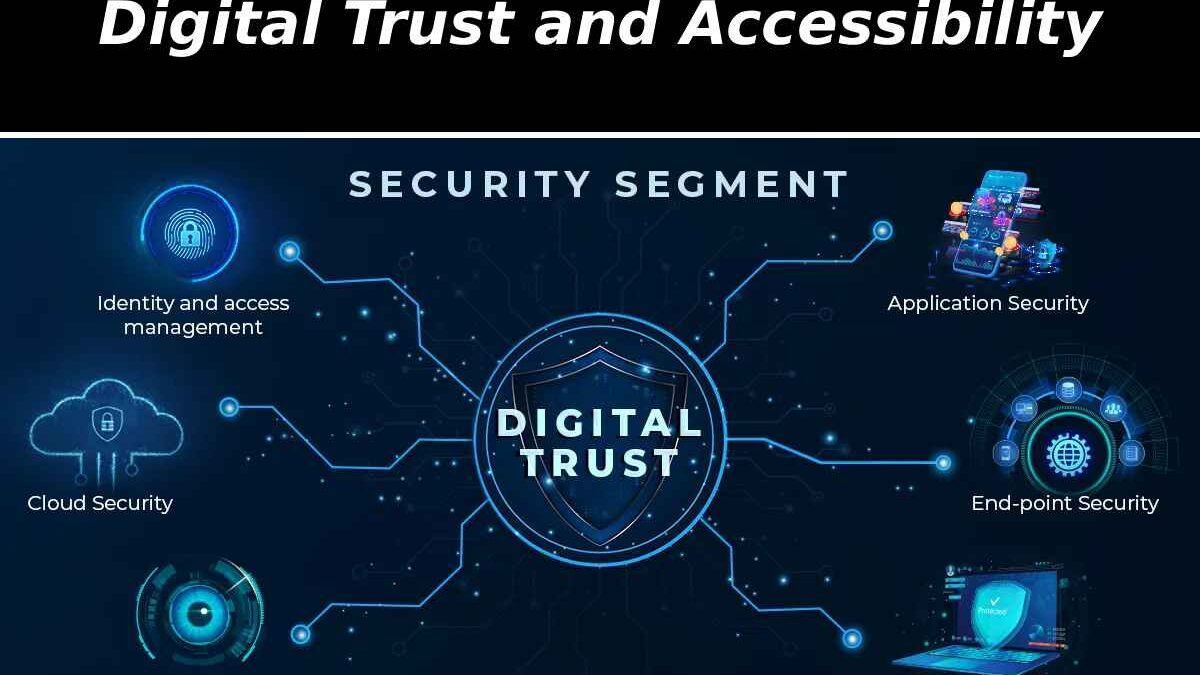In today’s digital world, a website is often the first time a business interacts with its customer. It is now less about presenting the products or services and more about creating an environment in which users feel comfortable, learn, and engage. The two pillars that are going to become paramount for businesses to endure in 2025 and beyond are digital trust and accessibility.
Today, we are going to take a look at how companies can benefit by putting these values first. Let’s dive in.
Table of Contents
Making Digital Trust and Accessibility a Must for Companies
In today’s digitally advanced world, companies thrive through trust and easy accessibility for every user. Let’s see how businesses can utilize them to grow more.
The Emergence of Digital Trust
Customers are more hesitant online than ever. Security breaches, phishing, and misinformation have made people hesitant to share their information or complete a purchase on the Internet. Digital trust is not about a beautiful user experience; it is about establishing authenticity, reliability, and accountability.
Trust starts with transparency. When companies are transparent in their policies, prices, and values, customers feel confident dealing with them. Using things like verified security badges, a clear privacy policy, and up-to-date company information allows users to feel assured that they are in good hands. Even a simple Company Details website with the latest and reliable details is an example of something trustworthy.
Accessibility as a Business Imperative
While credibility needs trust, inclusivity needs accessibility. A truly successful digital presence is accessible to all and usable by everyone, no matter the level of ability.
Accessibility goes beyond adding alt text to images or changing font sizes. It is about creating an online experience that caters to diverse needs. Whether it is making content readable by screen readers, adding captions to videos, or designing easy-to-follow navigation for cognitively different users, it needs to be done.
Companies that neglect accessibility risk disconnect from a substantial part of their audience. More significantly, they forego the opportunity to create a community that feels understood and valued. In many regions, meeting accessibility compliance is more than just ‘best practice’ – it’s the law.
Trust and Accessibility Go Hand in Hand
Trust and accessibility may seem like separate issues, but they actually relate to each other. When a company shows that it is committed to providing accessibility to its audience for the site, it indicates that it cares about people more than profit. This fosters long-term loyalty.
Similarly, when consumers trust a company, they are more likely to investigate its content, refer it to others, and return for repeat business. Studies even show that companies with higher trust scores can experience up to a 35% higher increase in leads and revenue.Combined, digital trust and accessibility form a feedback loop of credibility, inclusion, and expansion.
How Companies Can Prioritize These Values?
Companies can easily prioritize values like trust and accessibility. Here are a few ways to do that.
Be Transparent – Post clear data use policies, returns, and customer service. Make contact information current and accessible.
Investing in Security – SSL certificates, two-factor authentication, and encrypted transactions create an atmosphere of trust.
Use Inclusive Design – Use colors with appropriate color contrast, good use of headings/organized styles, and plain language.
Testing for accessibility – Regularly run accessibility tools on your site and include many groups of users for inclusive testing.
Educate Your Team – Provide training for employees related to daily business practices that influence accessibility and trust.
Listen to Your Customers – Feedback tends to reveal concern that automated testing may not address.
The Competitive Advantage of Getting It Right
It is not just a social responsibility, but it is a good business decision to practice digital trust and accessibility. Today’s consumers are smarter, and they have options. They will buy from businesses that demonstrate respect towards them and give them confidence. Having a site that generates trust and allows access to all users is the best way to differentiate yourself from the competition.
In addition, accessibility will improve SEO performance. Search engines prefer accessible sites, well-structured sites, and sites geared towards any number of users. Creating trust also starts favorable reviews and word of mouth, both of which solidify online reputation.
The Art of Personalization Without Compromising
Personalization is the hallmark of innovative digital experiences, from item recommendations to custom content streams. But while personalization is intuitive, it also needs to tread lightly. It must make things more convenient without encroaching on privacy.
Collecting too much data or applying it in unexpected ways can undermine digital trust at lightspeed. Determining the right balance requires being upfront about what data is collected and how it will be used. Giving users the ability to choose, use personalized features, or select not to be tracked or have their data collected is being respectful and considerate as opposed to tracking someone.
Properly implemented, these personalized experiences can enhance digital sites, creating more meaningful sites and developing the trust and sense of belonging that consumers are seeking.
Bottom Line
As we approach the end of 2025, organizations must realize that digital success is more than design terms or product set; it is about building trust (which is built on transparency and reliability), where no customer is excluded.
When organizations employ methods dealing with trust and accessibility, they are building not only a future-proofed digital presence, they are a brand for a brand, and building a real relationship with the people who support them.
In a time when every organization is one click away and competition is becoming a significant contributing factor, it is important for businesses to focus on trust and accessibility; both are not additional activities or bonuses but part of each organization’s DNA.

